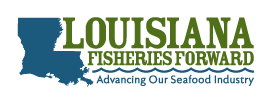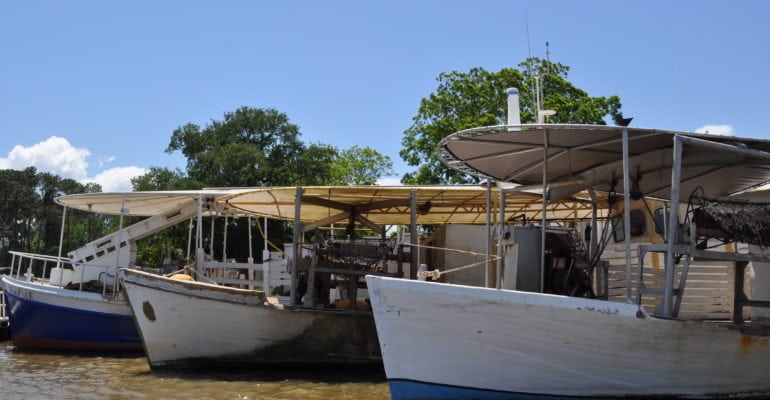The Louisiana Wildlife and Fisheries Commission has set the 2018-19 oyster season based on the annual oyster stock assessment provided by Louisiana Department of Wildlife and Fisheries biologists and comments received from members of the public, including the oyster industry.
The following dates were set for the upcoming oyster season:
Monday, October 29, 2018 – All Public Oyster Seed Grounds east of the Mississippi River north of the Mississippi River Gulf Outlet (LDH Shellfish Harvest Areas 1-4); Little Lake Public and Lake Mechant Oyster Seed Grounds; Hackberry Bay and Bay Junop Public Oyster Seed Reservations; Vermilion/East and West Cote Blanche Bay/Atchafalaya Bay Public Oyster Seed Grounds; and the Calcasieu Lake Public Oyster Area will open at one half-hour before sunrise.
Tuesday, October 30, 2018 – The following areas will close to seed harvest at one half-hour after sunset on October 29 but remain open as sacking-only areas starting at one half-hour before sunrise on October 30:
– All Public Oyster Seed Grounds East of the Mississippi River north of the Mississippi River Gulf Outlet (LDH Shellfish Harvest Areas 1-4); Little Lake Public and Lake Mechant Oyster Seed Grounds; Hackberry Bay and Bay Junop Public Oyster Seed Reservations; and the Vermilion/East and West Cote Blanche Bay/Atchafalaya Bay Public Oyster Seed Grounds.
During the 2018-19 oyster season, the following provisions will be in effect:
- Any vessel from which any person(s) takes or attempts to take oysters from the public oyster seed grounds and reservations described above shall:
- Be limited to 25 sacks of oysters per vessel per day with a 50-sack possession limit if fishing multiple days, except for Calcasieu Lake where the daily and possession limits shall not exceed 10 sacks of oysters per vessel. A sack of oysters for the purposes of this declaration of emergency shall be defined as the size described in R.S. 56:440. If sacks smaller than the size described in R.S. 56:440 are used, the daily harvest and possession limit shall be based on the number of sacks used, not the size of the sack or other measures. The daily take and possession limit shall not apply to vessels harvesting seed oysters for bedding purposes. The possession limit shall not apply to vessels operating under a valid Oyster Cargo Vessel Permit, and these vessels cannot harvest oysters.
- Be limited to either harvesting market oysters for direct sale (sacking) or harvesting seed oysters for bedding purposes on any one day and is specifically prohibited from doing both.
- If any person on a vessel takes or attempts to take oysters from the public oyster seed grounds, reservations, or areas described above, all oysters contained on that vessel shall be deemed to have been taken from said seed ground, reservation, or area from the time harvest begins until all oysters are offloaded dockside.
- The harvest of seed oysters from a public oyster seed ground or reservation must be for the purpose of moving the live oyster resource. The removal of more than 15 percent of non-living reef material in bedding loads is prohibited. All vessels must allow onboard inspection and sampling of seed oyster loads by LDWF biologists and/or agents.
- All oysters harvested from public seed grounds or reservations for the purpose of market must be uncontaminated, sealed and not gaping.
- All oysters harvested from public seed grounds or reservations for the purpose of market sales must measure a minimum of 3 inches from hinge to bill.
- Prior to leaving public seed grounds or reservations with oysters harvested from said seed ground or reservation for market purposes: all oysters must be sacked, the number of sacks must be recorded in a log book, and each sack must be properly tagged.
- Oyster sacks held on board overnight must be tagged before being put under refrigeration, and no later than one half-hour after sunset. Refrigeration rules as described in the Public Health Sanitary Code LAC 51:IX.327, LAC 51:IX.329, LAC 51:IX.331 and LAC 51:IX.333 must be adhered to.
- All vessels located in public seed grounds or reservations during those times between one half-hour after sunset and one half-hour before sunrise must have all oyster scrapers unshackled.
- In Calcasieu Lake, oyster scrapers are prohibited on vessels actively harvesting oysters.
The following areas will remain closed for the entire 2018-19 oyster season:
- The Sister Lake Oyster Seed Reservation as described in R.S.56:434;
- The area east of the Mississippi River as described in LAC 76:VII:511, south of the Mississippi River Gulf Outlet (LDH Shellfish Harvest Areas 5,6,7,8);
- Lake Tambour, Lake Chien, Lake Felicity, Deep Lake and Barataria Bay Public Oyster Seed Grounds as described in LAC 76:VII:517;
- The Sabine Lake Public Oyster Area as described in R.S. 56:435.1;
- The 2017 Cultch Plant located on the east side of Calcasieu Lake near Long Point – Cameron Parish within the following coordinates:
29 degrees 55 minutes 03.45 seconds N
93 degrees 19 minutes 20.26 seconds W
29 degrees 54 minutes 55.75 seconds N
93 degrees 19 minutes 01.32 seconds W
29 degrees 54 minutes 14.64 seconds N
93 degrees 19 minutes 22.67 seconds W
29 degrees 54 minutes 21.22 seconds N
93 degrees 19 minutes 40.43 seconds W
29 degrees 54 minutes 31.41 seconds N
93 degrees 19 minutes 12.81 seconds W
29 degrees 54 minutes 45.8388 seconds N
93 degrees 19 minutes 27.6384 seconds W
The Secretary of the Department was authorized by the Commission to set closure dates, adjust sack limits and/or sacking-only areas, based on biological and harvest data or if enforcement issues are encountered. The Secretary is also authorized to take emergency action to reopen areas previously closed if the threat to the resource has ended, and to open public areas if substantial oyster resources are located.
Public notice of any opening, delay, or closure of a season will be provided at least 72 hours prior to such action, unless such closure is ordered by the Louisiana Department of Health for public health concerns.
For maps detailing these actions, click HERE.
The Louisiana Department of Wildlife and Fisheries is charged with managing and protecting Louisiana’s abundant natural resources. For more information, visit us atwww.wlf.la.gov. To receive email alerts, signup at http://www.wlf.la.gov/signup.





